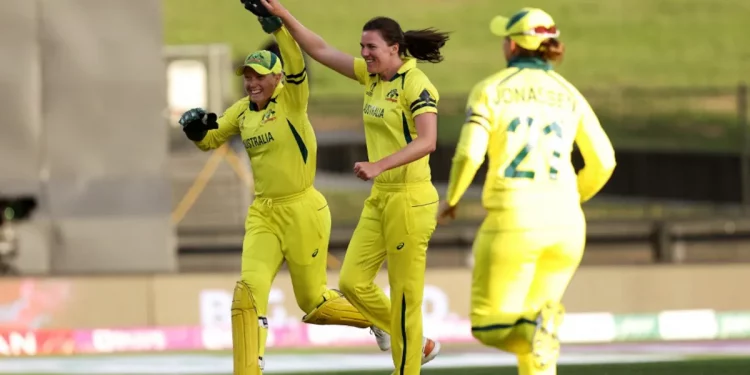Despite the fact that many international cricket players already consider India to be a second home, Australia is getting ready to embrace the unknown at the forthcoming women’s ODI World Cup.
Given the variety of locations, this is a scenario that will affect every team in the competition, including India, the co-hosts to some extent. The last women’s T20Is were held in 2019 at Guwahati’s Barsapara Stadium, the Holkar Stadium in Indore has never hosted women’s internationals, and the last ODIs in Visakhapatnam were in 2014. Although it has hosted Test matches and Twenty20 Internationals, Navi Mumbai, Bengaluru’s late replacement, has not yet been used for women’s cricket in the 50-over format.
To add to the mix is the Premadasa Stadium in Colombo. Australia, who will play Sri Lanka and Pakistan at the ground, has played there before in 2016, when just five of the current team was on tour. This year, the venue has held seven women’s ODIs, including those between South Africa, India, and Sri Lanka.
In reference to Colombo, where Australia played two spin-dominated ODIs earlier this year, head coach Shelley Nitschke stated last week that she had contacted the men’s setup for assistance in gathering data. The players are conscious that they will need to be flexible throughout the competition.
Before Australia’s three-match ODI series against India begins on Sunday in New Chandigarh, vice captain Tahlia McGrath remarked, “We feel like we’re travelling to India every second month almost.” “We’re playing in some areas that we’re not particularly familiar with, but we’ve spent a lot of time over here and played a lot in these conditions.
“We have never gone to New Chandigarh before, and we have never been to many of the World Cup stadiums. Since it’s a little different for us, it’s about understanding the situation, adjusting to it, being adaptable, and having excellent group communication.
“No matter where you are in India, you can get thrown up very different conditions from day to day, so excited about the challenge, [we have] a little bit of experience, but a little bit of unknowns.”
“It’s about learning the conditions, adapting to the conditions, being flexible and communicating really well as a group because it is a little bit foreign to us.”- Tahlia McGrath
Australia’s first international match since the Ashes ended in early February will be the series against India, but McGrath was optimistic that the team’s continuity will help them.
“We’ve been pretty settled with our squad for quite a while now, so we’ve been pretty lucky with that,” she stated. The only issue is that we’ll be here for a very long period, and I believe we now have 17 guys here and 15 in the World Cup squad, so it’s a great chance to play a variety of roles.
“Not sure what Shell’s got in mind, but we’ve got so much talent, so much depth over here that it doesn’t really matter what team we throw out or what batting order, all that sort of thing, we’re in pretty good hands.”
As she finishes the last phases of her recuperation following knee surgery, left-arm spinner Sophie Molineux is not anticipated to play in the India series, but she should be prepared for the World Cup. Although they have been selected for the bilateral series, all-rounder Charli Knott and wicketkeeper Nicole Faltum, who have not yet been capped, may not play in what is an opportunity to obtain further squad experience, barring injuries.
While the memories of their semi-final loss in last year’s T20 World Cup still linger, Australia will be hoping to become the first team since 1988 to defend the ODI championship once the World Cup starts.
“An ODI World Cup is special, they’re probably the pinnacle,” McGrath stated. “The manner we left was not pleasant, but it gives the players who were in Dubai a little more desire. We also want to be the first side in a long time to play back-to-back matches in the ODI World Cup, which gives us a little extra motivation.”







